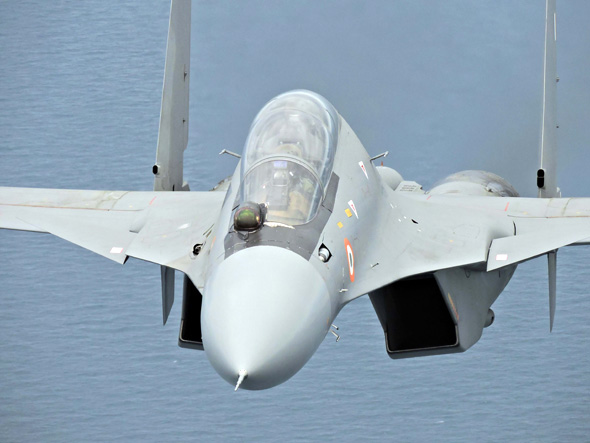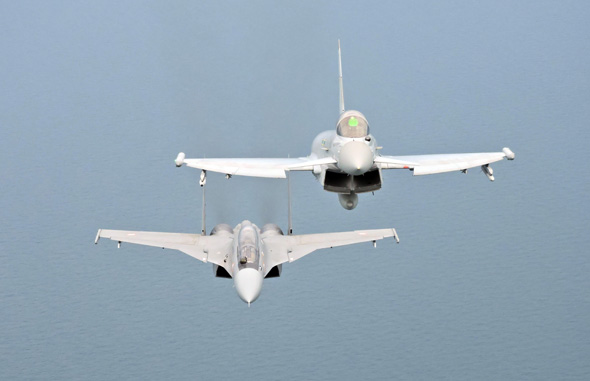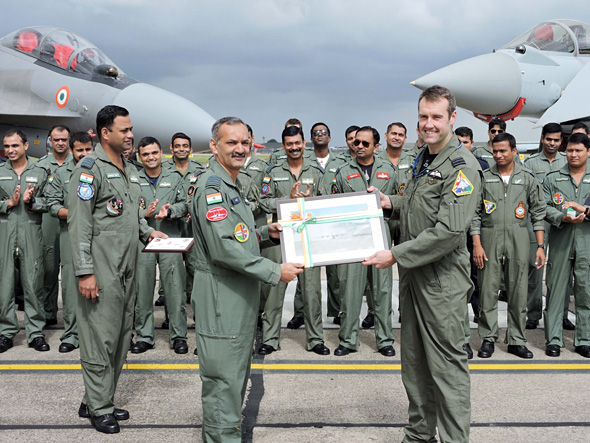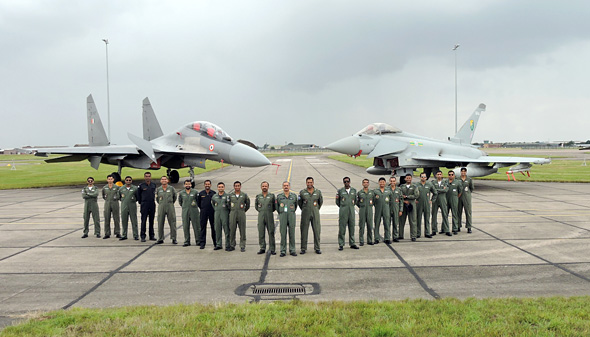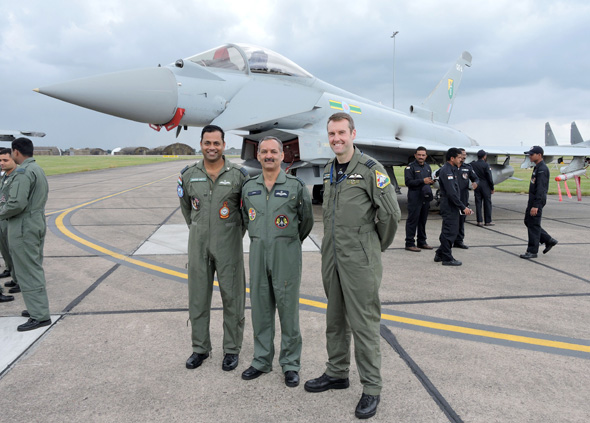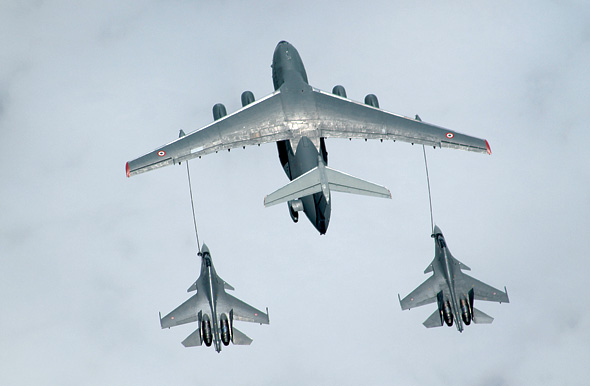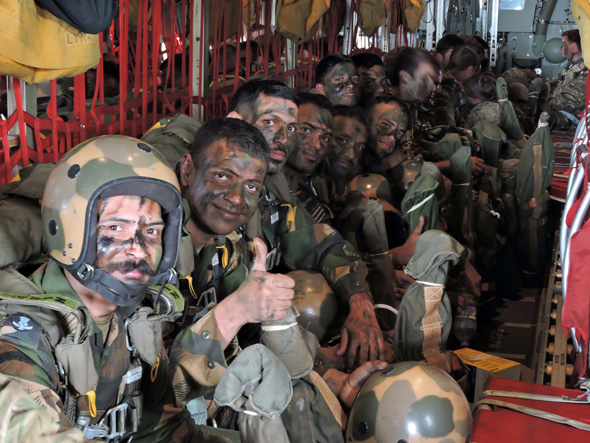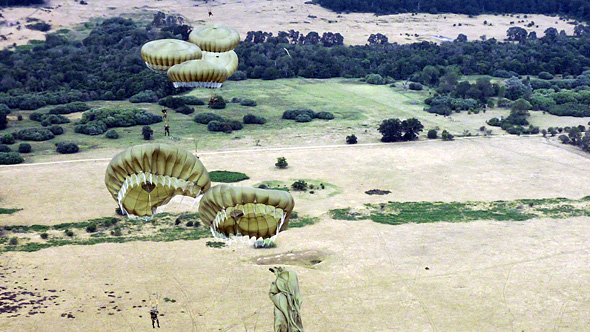INDIAN ARMED FORCES CHIEFS ON OUR RELENTLESS AND FOCUSED PUBLISHING EFFORTS

SP Guide Publications puts forth a well compiled articulation of issues, pursuits and accomplishments of the Indian Army, over the years

"Over the past 60 years, the growth of SP Guide Publications has mirrored the rising stature of Indian Navy. Its well-researched and informative magazines on Defence and Aerospace sector have served to shape an educated opinion of our military personnel, policy makers and the public alike. I wish SP's Publication team continued success, fair winds and following seas in all future endeavour!"

Since, its inception in 1964, SP Guide Publications has consistently demonstrated commitment to high-quality journalism in the aerospace and defence sectors, earning a well-deserved reputation as Asia's largest media house in this domain. I wish SP Guide Publications continued success in its pursuit of excellence.
Need Pure Professionalism
The unwarranted public statement by the IAF team leader was not only inelegant, irrelevant and politically inappropriate, it has caused considerable dismay amongst the participants in the exercise from the RAF and relegated the critical issue of lessons learnt into oblivion.
 | By Air Marshal B.K. Pandey (Retd) Former Air Officer Commanding-in-Chief of Training Command, IAF |
The fourth edition of the Indo-UK bilateral air exercise code named Indradhanush was conducted jointly between the Indian Air Force (IAF) and the Royal Air Force (RAF) at the latter’s base at Coningsby in Lincolnshire in the United Kingdom (UK) from July 21 to 31, 2015.The air elements of the IAF that took part in the air exercise were the Su-30MKI, IL-78 flight refuelling aircraft, C-17 Globemaster III and C-130J Super Hercules transport aircraft. Participating elements from the RAF included the Eurofighter Typhoon, the Voyager tanker, C-17 and the C-130J. In addition to the aircraft, the Indian Garud commandos participated alongside their British counterparts, the RAF Regiment of the Special Forces.
Admittedly, the IAF has been a late starter as far as exercises with air forces of foreign countries are concerned. In the first five decades after independence, the IAF had remained isolated not having engaged with any air force in the world in a tactical air exercise. Interaction with foreign air forces had been limited to activities such as training of IAF personnel on new aircraft or equipment under induction, specialised courses of instruction, deputation of instructors abroad or training of personnel of foreign forces in the training establishments of the IAF in India. The exposure of IAF personnel to foreign air forces thus had remained somewhat limited and restricted to the non-operational segment of activities. There was no tactical flying involved in such interaction. There was however, one international air exercise in 1963 that may appear to militate against the observation that the IAF was not a participant in any international exercise for five decades after independence. This was a multinational air exercise held at Kalaikunda codenamed Exercise Shiksha. This air exercise involved the United States Air Force (USAF), the RAF and the Royal Australian Air Force (RAAF). But the nature of this exercise was different from what is regarded as a joint air exercise, as coming soon after the Sino-Indian conflict of 1962, the purpose of Exercise Shiksha was to display support for and solidarity with India to counter expansionist moves in the future if any by Communist China. As there was no tactical interaction with the IAF, this cannot be regarded as a joint air exercise meant to benefit the IAF by way of a learning experience of any significance.
However, since the year 1999, international air exercises have become a fairly routine affair for the IAF. In the last decade-and-a-half, the IAF has had the opportunity to participate in joint air exercises with a number of leading air forces of the world. The first formal air exercise held abroad in which the IAF was a participant was in South Africa in the year 1999. Codenamed Exercise Blue Crane, this was a multinational exercise involving a number of African nations and was structured on UN Peace Keeping Operations. The IAF had a modest representation in the exercise by way of just one IL-76 and no combat aircraft of the IAF were involved. The IL-76 aircraft of the IAF carried out para-drop and simulated insertion of Special Forces. Even while there was no competition with any elements from other nations participating, the air exercise was a good learning experience for the IAF and helped elevate confidence levels in its transport fleet.
The IAF has been a late starter as far as exercises with air forces of foreign countries are concerned. In the first five decades after independence, the IAF had remained isolated not having engaged with any air force in the world in a tactical air exercise.
Following the initial baptism in South Africa, the IAF has participated in a number of exercises conducted jointly with foreign air forces both in India and abroad. These air exercises have involved the complete range of platforms including combat aircraft, helicopters as also support elements such as flight refuelling aircraft and airborne warning and control system (AWACS) aircraft. The list of air exercises includes the Cope series with the USAF, the Garuda series with the French Armée de l’Air or the French Air Force, Indradhanush series with the RAF of the UK and Exercise Avia Indra 2014 with the Russian Air Force. There have been a few other air exercises with the air forces of other smaller nations such as the Republic of Singapore Air Force and the Royal Air Force of Oman. Indradhanush held in July 2015, was the fourth joint air exercise between the IAF and the RAF. The two air forces have been sharing locations in each other’s territory and the last time that the IAF was deployed for such an exercise in the UK was in the year 2007.
Aim and Objectives of Joint Air Exercises
The aim of such joint exercises between or amongst air forces is to provide air warriors with a wider exposure in both the strategic and tactical domain which would include varying operational philosophies, new and novel concepts in the employment of air power, new tactics and techniques in aerial warfare which would include the employment of advanced weapons platforms as well as weapon systems, employment of the latest avionics, sensors and electronic warfare systems, more efficient methods of integration of the different components of the Air Force and so on. The joint air exercises are focused on exchanging ideas on the rapidly evolving dynamics of air warfare and concept of operations as also to imbibe lessons and strengthen interoperability should the need ever arise. Through joint air exercises, air warriors of the IAF have an opportunity to observe the best practices of other air forces, are exposed to different operating environments and enhance mutual understanding with other air forces. The experience gained in such joint air exercises and lessons highlighted in debriefs after the air exercise, help to widen horizons and contribute to overall professional growth of air warriors and consequently enhance the overall operational capability of the IAF.
Unwarranted Controversy
Unfortunately, Exercise Indradhanush has got embroiled in an ungainly and needless controversy following an interview with Indian television on return to India on completion of the air exercise. During the televised interview, the leader of the IAF contingent claimed a resounding 12-0 victory over the elements of the RAF participating in the air exercise. Claiming that the performance of the pilots of the IAF was “exceptional”, he said that the Su-30MKI of the IAF had the upper hand in close-range aerial combat when pitted against the supposedly superior and far more advanced Eurofighter Typhoon combat platform of the RAF even when outnumbered by the latter.
The view from the RAF is that air exercise Indradhanush provided an excellent opportunity to their fighter pilots to operate against the Su-30MKI in simulated combat exercises. In view of the escalating tension with Russia over Ukraine, the RAF could well find itself confronting Russian combat aircraft should the situation in the Baltic escalate into a wider and full-fledged conflict. In this context Exercise Indradhanush was of special significance to the RAF.
For the IAF too, Exercise Indradhanush provided a good opportunity for learning and the team leader ought to have focused on that instead of proclaiming victory. The comments by the team leader were inappropriate as in an air exercise under controlled conditions; there are no winners or losers. Besides in any competition in any discipline meant for training or otherwise where there can be winners or losers, neither of the participants can pass judgement on the final outcome of the exercise in terms of victory or defeat. This responsibility must necessarily be vested in an independent and neutral third party that would have no vested interest. In the case of Exercise Indradhanush, there was no requirement of an umpire as the air exercise was not about one of the participants emerging as victorious.
The unwarranted public statement by the team leader was not only inelegant, irrelevant and politically inappropriate, it has caused considerable dismay amongst the participants in the exercise from the RAF and relegated the critical issue of lessons learnt into oblivion. The RAF on its part has even gone to the extent of dismissing the claims of victory by the IAF as ‘comical,’ not very complimentary for the IAF. This sordid episode has also been equally embarrassing for the IAF. While the IAF is in the damage control mode and is making all efforts to downplay the controversy, what the IAF needs to ensure for the future is that those participating in such joint air exercises with foreign air forces have their perspectives correctly oriented and are briefed to scrupulously avoid scoring brownie points in the media in matters that are purely professional.
The author retired as the Air Officer Commanding-in-Chief, Training Command, of the Indian Air Force.
Exercise Indradhanush
